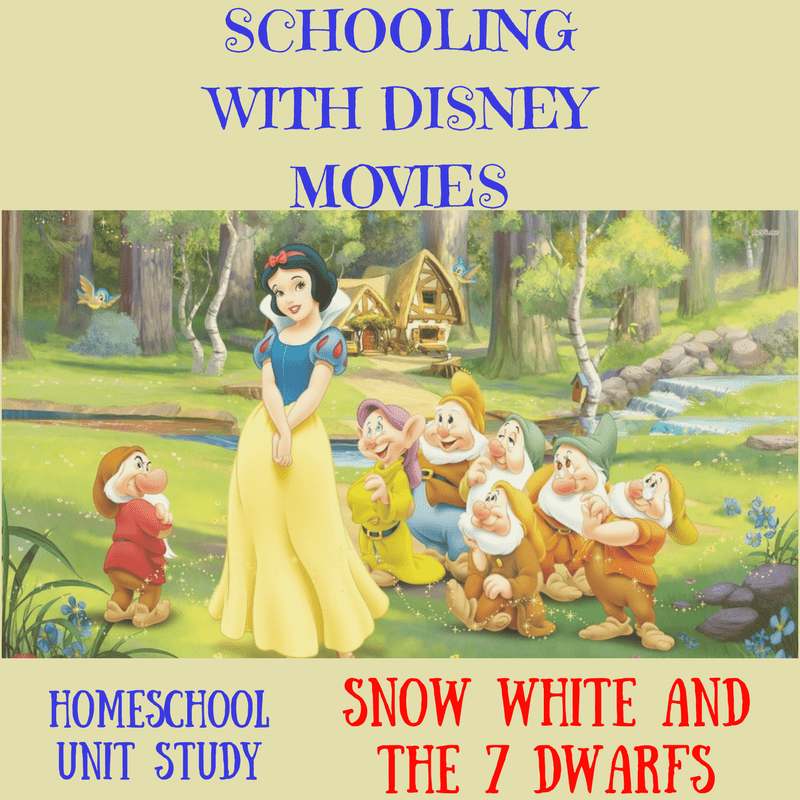“We are ice bears. How are we to survive without ice?” ~ Disneynature’s “Polar Bear”
From the opening line to the closing credits, DisneyNature Polar Bears is filled with lines from one single solitary polar bear that has surprisingly human thoughts. “How are we to survive without ice?” the polar bear asks. As the documentary continues, more of the same language and tone fill the slow-moving and laborious trek of the polar bears. In this DisneyNature Polar Bear Christian Movie Review, I will tell you what you need to know as a parent, plus some of my own thoughts.
Disney is not new to nature documentaries. In fact, “Disney produced 13 True-Life Adventure films between 1948 and 1960, including “Seal Island” (1948), “Beaver Valley” (1950), “The Living Desert” (1953) and “Jungle Cat” (1958); the films earned eight Academy Awards®.” And some of my favorite films are the DisneyNature movies.
My son, Jack-Jack loves to watch Bears and Monkey Kingdom and we have watched those two films over and over. My favorites are Wings of Flight and Dolphin Reef.

DisneyNature Polar Bear Movie Review Synopsis
From DisneyNature: “Narrated by two-time Academy Award® nominee Catherine Keener (“Capote,” “Being John Malkovich”), Disneynature’s “Polar Bear” tells the story of a new mother whose memories of her own youth prepare her to navigate motherhood in the increasingly challenging world that polar bears face today. Helmed by Alastair Fothergill and Jeff Wilson, the directing team behind Disneynature’s “Penguins,” and produced by Fothergill, Wilson, Jason Roberts, Keith Scholey, and Roy Conli, “Polar Bear” launches exclusively on Disney+ on April 22, 2022.”
DisneyNature Polar Bear begins with the narrator bear as an adult with a cub. Then it flashes back to her birth. For much of the film, DisneyNature Polar Bear features 3 polar bears, a mama bear, and 2 cubs, and follows them on their journey until the cub grows and parts ways with the mama bear. Voiced by Catherine Keener this film follows the female cub as she tells about her journey from cub to grown adult with a cub of her own.
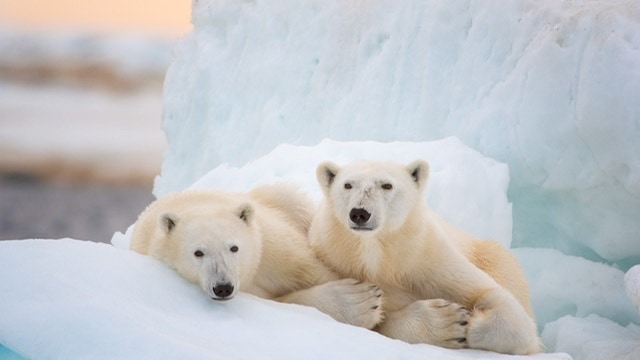
Filming DisneyNature Polar Bears
Filming began in Svalbard, Norway which is 650 miles from the North Pole. This archipelago (a group of islands) is located between mainland Norway and the North Pole. The geography of this area includes glaciers, mountains, fjords, and more polar bears than people. This made it an excellent location to film Polar Bears.
Living (or filming) in the Arctic is difficult due to weather and light, this area is dark from October through February. The crew was filming for 241 days.
I think it is important to note that “The filmmakers’ experience with the animals lends itself to creating a preliminary script for the film long before they arrive on site. Says Fothergill, “We write our initial 40-page script based on our expectations having filmed polar bears in the years leading up to this film,” he says. “Of course, the animals never read the scripts, so loads of things happen that in your wildest dreams you would never expect.”
“Home – it’s the place where childhood and memory live together,” says the polar bear!
Positive Elements of DisneyNature Polar Bears Movie Review
The visuals are stunning. You see the arctic landscape that is rarely filmed. The film features an original score by “Harry Gregson-Williams” (Mulan). If you like the soundtrack, the “Polar Bear” digital score soundtrack is available on Walt Disney Records.

Negative Elements of DisneyNature Polar Bears Movie Review
Before I get into the fact that this entire film felt like environmental climate change propaganda, I want to mention a few things that children might have difficulty with. For the most part, all sensitive subjects are tackled with great care.
The film begins with a mom and 2 cubs. Eventually, they are reduced to a mom and 1 cub. “When spring arrived there were only 2 of us. The winter had taken my brother.” You see a cub laying on the snow and the female narrator cub and mom bear walking away.
There is hunting for seal and you see the mother bear dragging a seal, but not actually killing it. A lot of the sensitive scenes are done through implied dialogue.
There are other scenes where the bears are eating. In one scene they come across a dead whale and a group of polar bears all partake in the whale feast.
Another segment is when the female cub has grown and left her mother. She is now traveling on her own. She comes across a male bear. These are some of her thoughts:
“That day I realized that not all male bears need to be feared.”
“Just two young bears who hung out one day.”
“Then he was gone.”
The film shows them playing and she compares it to how she used to play with her brother. I was certain it was a mating thing, however, apparently it was not.
Later, she meets another bear and says:
“I soon understood I was being courted.”
“He stayed by my side for many days until I felt the time was right.”
“He would help provide me with a family of my own.”
Nothing is shown besides 2 bears going up a mountain.
More About the Making of Polar Bears
“Director Alastair Fothergill has wanted to make a polar bear movie for Disneynature for years…”Every year, we would come to Burbank and pitch our ideas,” he says. “And every year, I’d pitch polar bears. They’re solitary animals—However, white bears in the middle of an Arctic setting—how do you make a 75-minute movie about polar bears? But I really believed in it.”
Putting words into the bear’s mouth tends to sway the audience to feel a certain way. The reality is that bears are solitary (live alone) creatures. The film assigns very human traits to the polar bear and makes you think that the female bear is “lonely” furthering the “decline in polar bear” theory.
“It was important to us to include the environmental story that underscores what the bears are experiencing,” says Wilson. But to paint a picture for viewers of what was happening, filmmakers knew they’d need their story to take place over a decade or more. Says Wilson, “It would be false to tell a story about a single bear who’d witnessed climate change because it’s really what happens over a much longer timeframe. By choosing to tell a story that spans 15 years of a bear’s life, we’re able to showcase the kinds of changes that are happening in places like Svalbard.”
However, DisneyNature did tell a story of a single bear, but only filmed for less than a year. While many DisneyNature films follow one particular animal and assign a name and story to that animal, this movie didn’t assign a name but did leave the viewer believing that the filming took place over years.
At the end of the movie, Disney does tell you how you can help by supporting Polar Bears International.
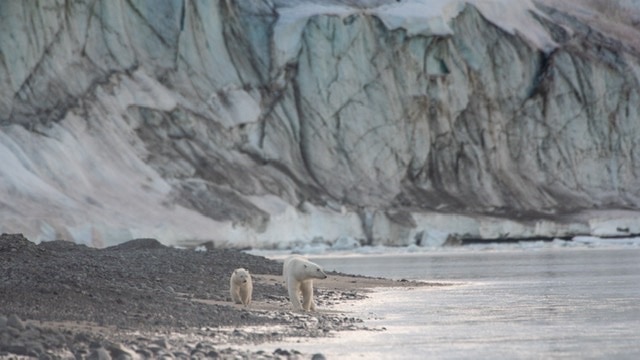
Viewing Recommendations for DisneyNature Polar Bear Movie Review
In a “what in the world did I just watch moment,” I almost forgot that I was supposed to be watching a nature documentary and not some liberal propaganda.
This DisneyNature film takes their agenda and pushes it beyond any film that I have ever watched from Disney. In fact, there was very little learning that took place. I had come to love learning about other species and seeing them in their native habitat. This documentary is littered with lines that could only be spouted by a die-hard climate change advocate (and certainly not a polar bear).
“The heart of the story is family—that bond between mothers and cubs,” says producer Roy Conli. “That relationship lasts between two-and-a-half and three years—in that time the mother will teach her cubs everything they need to know to survive.”
Learning with DisneyNature Polar Bears
According to DisneyNature, this is Polar Bears by the numbers:
POLAR BEAR BY THE NUMBERS
20 typically solitary bears dining together on a whale carcass
94 days in camp/field
147 days on a boat
210 days in edit
241 total crew days in the field
650 miles from Svalbard filming location to the North Pole
1747 packets of freeze-dried food consumed
2,040 Yorkshire tea bags consumed
46,335 kilometers traveled via skidoo
4-22-2022 release date on Disney+

Teach about Ice by Conducting Melting ice experiments
What makes ice melt faster or slower? How does the temperature of the water affect ice melting?
What are the leading causes of polar ice melting?
Since one of the leading causes is icebreaking ships, show your children how fast small pieces of ice melt versus large chunks of ice. Make sure the water is at the same temperature before putting the ice in the glass. Additionally, weigh the ice to ensure that you are using the same amount of ice in each glass. Which glass of ice melts faster?
Learn some facts about Polar Bears
National Geographic YouTube Video
Teaching Your Children to Think Critically
What does Disney do to help or hinder the growing threat of climate change?
Disclaimer: I am always amazed when huge companies preach to us while continuing to live in a manner not consistent with the rest of us. The CEO of Disney, Bob Chapek, lives in a 10,000-square-foot house! How is that for reducing Disney’s carbon footprint?
While DisneyNature produces these films warning us to give and do our part – you know you should give up your big car, turn your heat down, and consume less, but at the same time make sure you board an airplane that will deliver you to the doorsteps of the Mouse.
Admittedly, Disney does recycle, and they have helped to innovate new technologies. However, they are a big consumer of fuel and resources. In fact, they encourage our overconsumption of products and stuff through their effective merchandising.
Is the message, reduce consumption and do your part unless it is Disney merchandise?
Watch this movie and then research both sides. Any scientist that says anything outside of the “accepted” narrative is often fired, blacklisted or thought to be a quack. However, finding multiple sources to research is essential to forming a critical thinking adult.
Finally, to think critically, you must get your information from more than one source. If all you listen to is one side of the debate, you become convinced that one side is right. Our brains cannot believe what we don’t believe. It is hard to change someone’s views including our own.
Articles to Help You Learn Both Sides of the Polar Bear Debate
Polar Bears by the Numbers:
Polar Bear Population and Trends
Dr. Susan Crockford was a Zoologist with the University of Victoria, Canada, and specialized in the study of polar bears. You can follow her science at Polar Bear Science.
Dispelling the doomsday propaganda in DisneyNature’s new polar bear ‘documentary’
I have loved using DisneyNature films to teach my children about the earth and the world around them. However, this is one film I won’t be using to teach about Polar Bears, but instead, we will be using it to teach about propaganda and how one-sided this film is.
If you want to really research you need to find magazine articles and professional journals in libraries, and not on the internet, because any article published 20 years ago that has been wrong about the polar bear predictions has been removed from the internet.
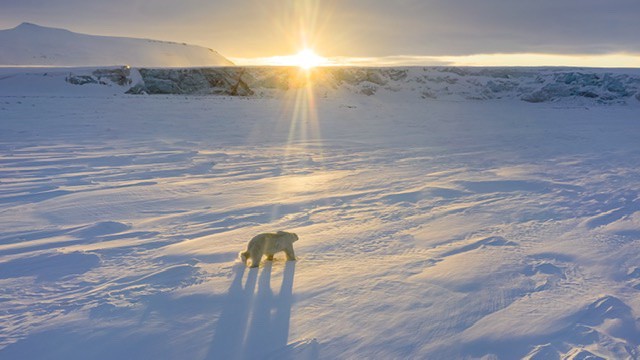
MORE INFO About the Film
Rated PG
Runtime 1 hour, 23 minutes
Release Date: April 22, 2022 (Earth Day) Direct to Disney+
Key Credits:
Director: Alastair Fothergill and Jeff Wilson
Narrator: Catherine Keener
Produced by: Alastair Fothergill, Jeff Wilson, Roy Conli
Associate Producer: Jane Hamlin
Production Manager: Emily Lascelles
Head of Technical Operations: Dan Clamp
Edited by: Andy Netley
Narration Written by: David Fowler
Documentary or Propaganda – You Decide
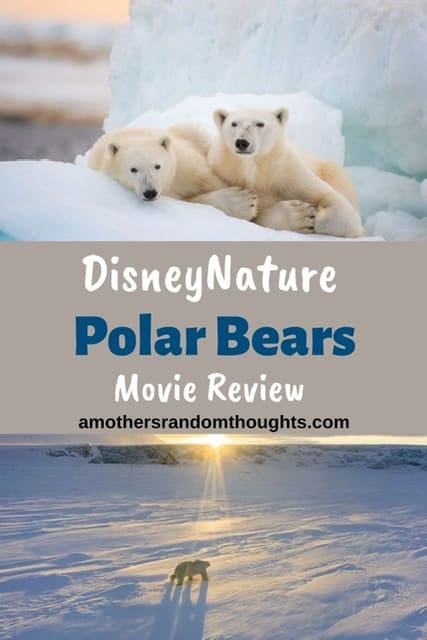
ALL THE DisneyNature Movies in order
The Crimson Wing: Mystery of the Flamingos Narrated by Mariella Frostrup – Released October 26, 2008
earth Narrated by James Earl Jones – Released April 22, 2009
Oceans Narrated by Pierce Brosnan – Released April 22, 2010
African Cats Narrated by Samuel L. Jackson – Released April 22, 2011
Chimpanzee Narrated by Tim Allen = Released April 20, 2012
Wings of Life Narrated by Meryl Streep – Released April 16, 2013
Bears Narrated by John C. Reilly – Released April 18, 2014
Monkey Kingdom Narrated by Tina Fey – Released April 17, 2015
Born in China Narrated John Frasinksi – Released April 21, 2017
Penguins Narrated by Ed Helms – Released April 17, 2019. Check out this DisneyNature Penguin Unit Study
Dolphin Reef Narrated by Natalie Portman – Released April 2, 2020, straight to Disney+
Polar Bear Narrated by Catherine Keener – Released on Earth Day 2022 – April 22, 2022, Straight to Disney Plus.

Reviewing movies for parents from a Christian perspective since 2005. Know Before You Go!
Christian Homeschooling mom – 30 years and counting
Autism Mom & Disney enthusiast
